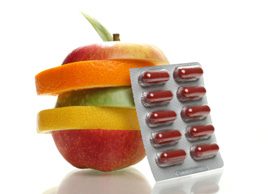5 things you need to know about iron
Iron plays a key role in keeping your body healthy, but how can you tell if you’re getting enough? Here are five things you need to know about iron

Fortified foods seem to be all the rage these days and that includes items such as iron-fortified cereals, breads and pastas. But why would you want to eat foods fortified with iron? As it turns out, iron is essential for maintaining good health. Here are five things you need to know about this important mineral.
1. Your whole body needs iron
We need iron to make hemoglobin for our red blood cells, which deliver oxygen from the lungs to every cell in our bodies. Iron is also essential for brain development in children, and for lifelong brain functioning.
2. You’re probably not getting enough iron
The recommended intake for adult women is 18 mg per day, and for men it’s 8 mg per day. It’s rare for people to consume too much iron, says Cristina Sutter, registered dietitian at Satori Integrative Health Centre in Richmond, B.C. ‘For the most part, we’re concerned about Canadians not getting enough.’ Women are at risk of iron deficiency because of blood loss through menstruation, and also because they eat less meat (and less food overall) than men. Vegetarians, people who don’t eat a lot of red meat, and athletes who do distance running or cycling must also be careful to get enough iron. (Discuss blood tests with your doctor if you’re concerned about your iron levels.)
3. Iron boosts your immune system
If you’re iron-deficient, ‘one of the signs is that you get sick very often, and can be sick for longer,’ says Sutter. Not only are you more vulnerable to infection, but a lack of iron can cause fatigue, shortness of breath during exercise, a rapid heartbeat, dizziness, headaches, irritability and a pale appearance. (No wonder people often refer to iron-deficiency anemia as having ‘tired blood.’)
4. Not all iron is absorbed equally
There are two types of iron: heme and non-heme. Heme iron, which our bodies absorb much more readily, is only available in meat, poultry, fish and shellfish. (The richest sources are red meat, dark poultry, organ meats such as liver, oysters and clams.) Non-heme iron is found in plant sources, including dried lentils, beans and peas; whole-grain and enriched pasta and bread; leafy green veggies; dried fruits; nuts and seeds; fortified cereal; and eggs. (Pumpkin seeds have a surprising 8.6 mg per quarter-cup!) Because non-heme iron isn’t absorbed as well, vegetarians need to consume 32 mg of iron per day’almost twice as much as meat eaters.
5. Adding iron to your diet is easy
Aim to include iron-rich foods in each meal. You can boost the absorption of non-heme iron by eating it with foods high in vitamin C, such as oranges, strawberries, tomatoes, broccoli, cauliflower, cantaloupe, kiwi, peppers and citrus juices. You can also increase iron consumption by using cast-iron or stainless steel cookware. Wait for an hour after eating before having coffee or tea, which can cut iron absorption by 35 and 60 percent, respectively.
Don’t miss out! Sign up for our free weekly newsletters and get nutritious recipes, healthy weight-loss tips, easy ways to stay in shape and all the health news you need, delivered straight to your inbox.




